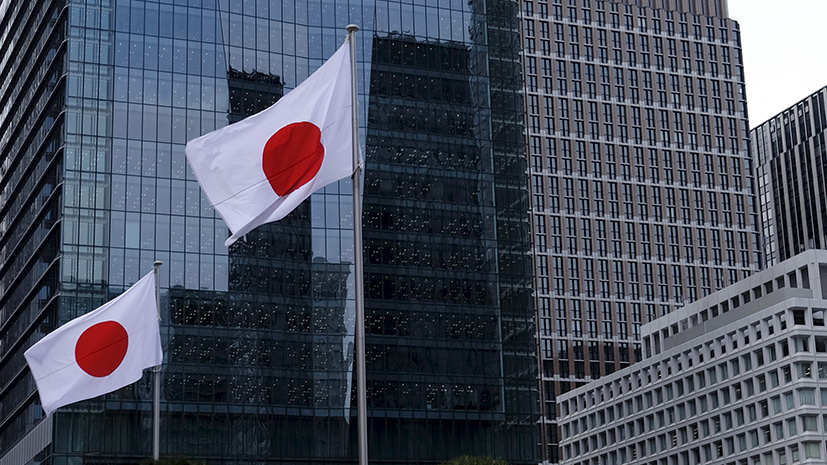Japan's main economic index has fallen to a minimum over the past ten years. According to the latest estimates of the government, the indicator reached the lowest level since November 2009 and amounted to 90.8 points. At the same time, the Japanese cabinet assessed the current state of the economy as "deteriorating."
According to the forecast of the International Monetary Fund (IMF), in 2020 Japan's GDP growth will slow down from 1% to 0.7%, and in 2021 the economy can grow by only 0.5%. Meanwhile, specialists from the Japanese Center for Economic Research warn of a possible recession. In their report, the organization’s experts estimated the probability of a downturn in the Asian economy at 82.4%.
Interviewed RT analysts attribute the worsening economic situation to a sharp drop in exports. Deliveries of goods from Japan abroad have been continuously declining for 13 consecutive months. In December 2019, the country exported products 6.3% less than in the same month in 2018. This is stated in the materials of the Japanese Customs Administration.
“The production of goods in Japan is very expensive for companies, and the authorities have not yet been able to fix this. Business has to make large social obligations to employees. As a result, labor is becoming more expensive, and prices for final products increase many times over. In this regard, Japan noticeably loses to China, South Korea and other countries in the region, ”said Alexei Maslov, head of the HSE School of Oriental Studies, RT.
According to the calculations of the IHS Markit analytical agency, the index of business activity in the manufacturing sector of Japan for nine months remains below the psychological mark of 50 points. Traditionally, this situation indicates the stagnation of the industry.
“The situation is aggravated by the fact that foreign companies do not want to come to Japan. Foreign business considers the Japanese market too closed, overregulated and requiring knowledge of a large number of subtleties. Thus, in domestic production there is no price competition. As a result, the decline in exports may continue for at least another three to four years, ”added Maslov.
- Reuters
- © Toru Hanai
Call of Duty
Experts explain the decline in production by weak domestic demand. In recent years, Japanese authorities have tried to revive consumer activity and poured large volumes of unsecured money into the economy. Moreover, in 2016, the Bank of Japan lowered its interest rate to a negative level of -0.1% per annum. The actions of the country's leadership should have led to cheaper loans, increased spending among the population, increased domestic demand and investment.
However, the Japanese authorities failed to achieve the intended results. Moreover, the infusion of money into the economy has led to excessive borrowing of the country. So, today the total debt of the population, companies and government is more than five times the size of the Japanese economy and amounts to 540% of GDP. According to the Institute of International Finance (IIF), the figure is the highest in the world.
“An attempt by the authorities to pump up the economy by increasing public debt was not successful. Now, even if the efforts of the government ultimately cause sustained inflation and consumer demand, the key rate will have to be raised, and this will inevitably increase the cost of servicing debt. Given the sheer size of debt, the consequences can be disastrous. The situation may turn out to be not just a default in the country, but also a crisis of the global financial system, ”Dmitry Alexandrov, chief strategist at Univer Capital, told RT.
According to experts from countries of the Organization for Economic Cooperation and Development (OECD), over the past 27 years, the Japanese budget has exceeded revenues. Thus, to service the public debt, the country constantly has to take new loans.
“To stop lending is to shut off the air to the Japanese economy. Therefore, in the future, the country will only have to increase borrowing on the foreign market. This will mainly be due to US loans, which means that the influence of the United States on Tokyo will increase. On the other hand, to cover the budget deficit, the Japanese authorities can significantly increase taxes. But this risks turning into social stratification, the collapse of production and the resignation of the cabinet, ”added Alexei Maslov.
Leaving youth
In addition to servicing the public debt, the Japanese authorities need to constantly increase spending on health and social welfare. Analysts link this state of affairs with the country's demographic problems. First of all, we are talking about an aging population.
“Due to an aging population, spending on health care and social assistance will grow by 4.7% of GDP over the period 2020–2060,” the OECD study says.
According to economists at Credit Suisse, the current number of people over retirement age (65) is already 52% of the working-age population. According to the organization’s forecast, by 2060 this parameter will reach 82%.
“Aging citizens need to pay very large benefits that the Japanese earned in corporations. The country has a high turnover of money, but the business environment is heavily regulated, so companies cannot direct available funds to improve production. As a result, all the money goes only to support the non-working population, ”Maslov concluded.

